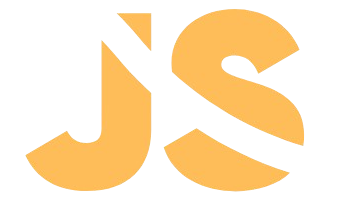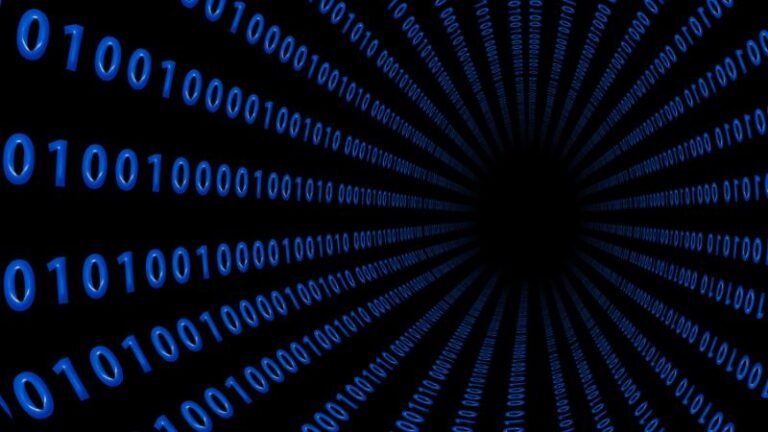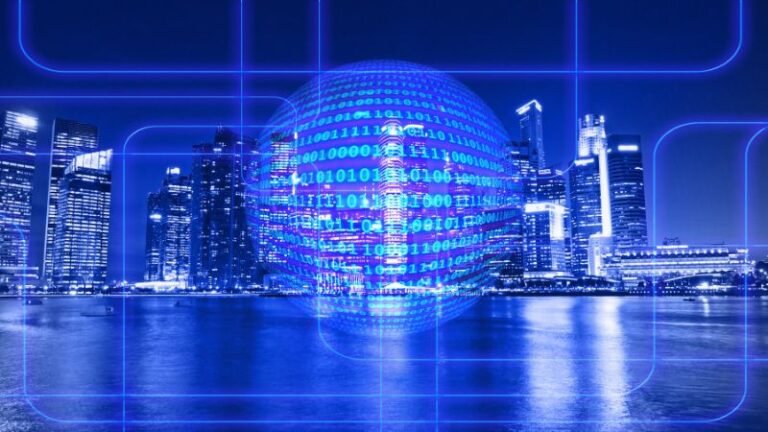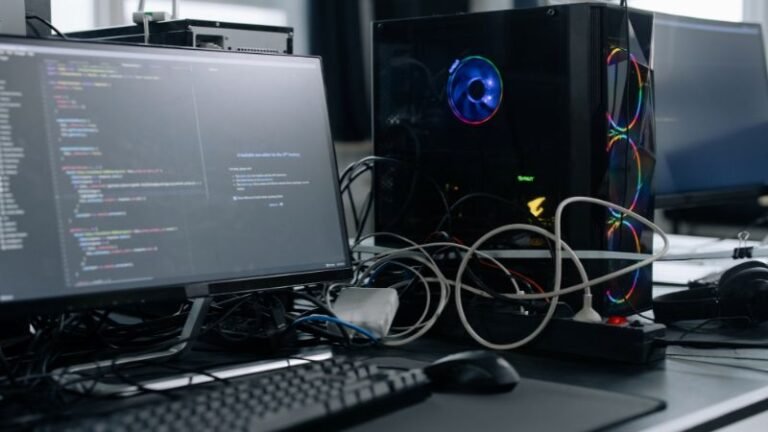What is Computer Science?
Computer Science is the study of computers—how they work, how we design them, and how we use them to solve problems. At its core, Computer Science is about problem-solving and logic, a subject that blends creativity with technical skills to shape the world we live in.
Let’s break this definition into smaller pieces to understand what it truly means.
1. Computers and Their Role in Our Lives
A computer is an electronic machine that can process information, store data, and perform complex calculations at incredible speeds. It can be as small as your smartphone or as large as supercomputers used by scientists.
But have you ever wondered how computers make life so easy? From helping doctors diagnose illnesses to making video calls possible, they are everywhere. Computer Science is the study that makes all these things possible.
2. The Three Pillars of Computer Science
To truly understand Computer Science, you need to understand its three main components:
- Hardware: Think of hardware as the body of a computer. These are the physical parts like the keyboard, mouse, screen, and even the tiny processor chip inside. Just like our brain controls our body, the Central Processing Unit (CPU) is the brain of the computer. Analogy: Imagine a car. The engine, tires, and steering wheel are its hardware. Without these, the car can’t move. Similarly, without hardware, a computer can’t function.
- Software: Software is the soul of the computer. It’s the set of instructions or programs that tell the hardware what to do.
- Examples: Apps like YouTube, games like Minecraft, and operating systems like Windows or macOS.
- Theories and Algorithms: This is where the magic happens. Computer Science isn’t just about making computers work; it’s about making them work smartly and efficiently.
- Algorithms are step-by-step instructions to solve problems.
- Example: Think of a recipe for making a cake. It tells you what to do, in what order, and how to do it. That’s an algorithm!
3. Computer Science is About Problem-Solving
The essence of Computer Science lies in solving problems. It’s like a toolkit that helps us address challenges in different fields:
- Medicine: Computers analyze medical scans to detect diseases like cancer.
- Transportation: Apps like Uber and Google Maps use Computer Science to find the best routes and calculate fares.
- Entertainment: Animation in movies like Toy Story is powered by Computer Science.
Key Areas of Computer Science
Now that we understand what Computer Science is, let’s dive into its main areas.
1. Algorithms and Data Structures
Algorithms are like the brains behind solving problems. They break down a task into small steps, just like instructions in a LEGO manual.
- Example: If you’re finding the shortest route to a friend’s house, an algorithm calculates the quickest way by comparing all possible paths.
Data Structures, on the other hand, are about organizing and storing information so that it can be accessed quickly.
- Example: Imagine you’re organizing your bookshelf. If books are arranged randomly, finding one is hard. But if they’re sorted alphabetically, it’s easier. Data structures work the same way in a computer!
2. Programming
Programming is the language of computers. Just as we speak English or Spanish, computers “understand” programming languages like Python or Java.
- Why do we need programming?
- To tell a computer what to do.
- To solve problems by writing clear, logical instructions.
Example: A child learning to bake cookies will need clear, step-by-step instructions. Programming provides the same clarity for computers.
3. Computer Systems and Networks
Computers are not isolated. They work together through networks, sharing information and resources.
- Example: When you send a message on WhatsApp, it travels through a network to reach your friend.
Computer Systems study how all parts—hardware, software, and networks—work together seamlessly.
4. Artificial Intelligence (AI)
AI allows computers to “think” and “learn.”
- Examples:
- Self-driving cars make decisions about when to stop or turn.
- Virtual assistants like Alexa understand your voice commands.
AI is like teaching a computer how to mimic human intelligence.
5. Human-Computer Interaction (HCI)
HCI focuses on designing computers that are easy to use.
- Example: Smartphones are a result of HCI—they’re designed to be user-friendly, even for kids!
Importance of Computer Science
1. It Shapes Our World
Computer Science is everywhere: in phones, hospitals, schools, and even space exploration. It solves problems that seem impossible at first.
2. It Drives Innovation
From life-saving robots in surgery to apps that teach languages, Computer Science pushes the boundaries of what’s possible.
Common Misconceptions About Computer Science
- “It’s All About Coding.”
Computer Science is much broader—it includes designing systems, understanding hardware, and even studying ethics. - “It’s Too Hard.”
While it requires effort, anyone with curiosity and determination can learn it. Think of it as a puzzle—you solve it piece by piece.
Real-World Example: Google Maps
Let’s see how Computer Science powers an everyday app like Google Maps:
- Algorithms: Calculate the fastest route.
- Data Structures: Store maps efficiently for quick access.
- AI: Predicts traffic and finds alternate routes.
Without Computer Science, this convenience wouldn’t exist.
History and Evolution of Computer Science
The story of Computer Science is one of human ingenuity and the desire to solve problems faster and more efficiently. It spans thousands of years, evolving from simple calculations to the complex artificial intelligence systems we use today. Let’s journey through time to understand how this fascinating field developed.
1. The Early Foundations: Before Computers Existed
a. The Need for Calculation
Humans have always sought ways to perform calculations more efficiently. Early civilizations used tools like:
- Abacus (circa 2400 BCE): A simple device with beads sliding on rods, used for arithmetic calculations.Fun Fact: The abacus is still used in some parts of the world to teach basic math!
b. Mathematicians Who Laid the Groundwork
Great minds like Euclid, Archimedes, and later Al-Khwarizmi (the father of algebra) laid the mathematical foundation that would eventually lead to modern Computer Science.
- Al-Khwarizmi’s work introduced the term “algorithm,” a concept that drives all computer programming today.
2. The Mechanical Age (17th to 19th Century)
a. Early Machines
As societies advanced, so did their need for faster calculations.
- Pascal’s Calculator (1642): Invented by Blaise Pascal, this device could perform addition and subtraction mechanically.
- Difference Engine (1822): Designed by Charles Babbage, it was a massive machine intended to perform complex mathematical calculations.Why It Matters: Babbage is often called the “Father of the Computer” because his ideas paved the way for modern computing.
b. The First Programmer
- Ada Lovelace (1815–1852): Working with Babbage, she wrote the first algorithm intended for a machine.
- She envisioned computers doing more than calculations, predicting their use for creating music and art.
3. The Birth of Modern Computing (20th Century)
a. Theoretical Breakthroughs
- Alan Turing (1912–1954): Often called the “Father of Computer Science,” Turing proposed the concept of a universal machine capable of performing any computation. This theoretical device, the Turing Machine, is the basis for modern computers.Real-World Impact: Turing’s work helped crack the Nazi Enigma code during World War II, saving millions of lives.
b. First Electronic Computers
- ENIAC (1945): The first general-purpose electronic computer.
- It was massive, filling a room, and used thousands of vacuum tubes to process calculations.
4. The Era of Transistors and Microprocessors (1950s–1970s)
a. The Revolution of Transistors
- Transistors replaced bulky vacuum tubes, making computers smaller, faster, and more reliable.
b. Integrated Circuits
- In the 1960s, integrated circuits (microchips) allowed for even more compact and efficient designs.
- Impact: These advancements brought about the first personal computers.
c. The First Programming Languages
- Early languages like FORTRAN (for scientific calculations) and COBOL (for business applications) made programming more accessible.Fun Fact: Grace Hopper, a pioneer in Computer Science, developed COBOL and coined the term “debugging” after removing a literal bug from a computer!
5. The Personal Computer (PC) Revolution (1980s)
a. Computers for Everyone
In the 1980s, companies like Apple and IBM introduced personal computers that were affordable and user-friendly.
- Examples:
- Apple’s Macintosh brought graphical user interfaces (GUIs) to the mainstream.
- Microsoft’s Windows operating system revolutionized how people interacted with computers.
b. Programming Goes Mainstream
Languages like C and later Python emerged, making it easier for people to create software.
6. The Internet and Connectivity (1990s)
a. The Birth of the World Wide Web
- Invented by Tim Berners-Lee, the web allowed information sharing on a global scale.Impact: The internet transformed every aspect of life, from communication to commerce.
b. Networking
- The rise of local area networks (LANs) and later wireless networks connected computers worldwide, leading to innovations like email, online shopping, and social media.
7. The 21st Century: The Age of Smart Technology
a. Mobile Computing
- Smartphones and tablets have put computing power in everyone’s pocket.
- Example: Your smartphone is millions of times more powerful than the computers used in the Apollo 11 moon landing!
b. Cloud Computing
- Services like Google Drive and Dropbox allow people to store and access data from anywhere.
c. Artificial Intelligence (AI)
- AI has become a major focus, enabling technologies like voice assistants (Siri, Alexa) and autonomous vehicles.
d. Quantum Computing
- Researchers are now exploring quantum computers, which could solve problems far beyond the capability of classical computers.
How Computer Science Has Transformed Our World
1. Medicine
- Computers help in diagnosing diseases, managing hospital systems, and even performing surgeries.
2. Education
- Online learning platforms make education accessible to millions worldwide.
3. Entertainment
- Streaming services, video games, and digital art owe their existence to advances in Computer Science.
The Future of Computer Science
The journey of Computer Science is far from over. Future developments may include:
- Advanced AI that understands emotions.
- Quantum computers solving problems like climate change modeling.
- Seamless integration of technology with the human body (brain-computer interfaces).
Applications of Computer Science in Real Life
Computer Science is a cornerstone of modern society, influencing nearly every aspect of our daily lives. From the technology we rely on for work and entertainment to innovations in medicine, education, and transportation, Computer Science has transformed how we live, think, and interact. In this chapter, we will explore the real-life applications of Computer Science in various fields, breaking them down into relatable examples and practical insights.
1. Everyday Technology
a. Smartphones and Personal Devices
- Role of Computer Science: Every feature in a smartphone, from calling and texting to browsing and apps, is powered by Computer Science. Programming and software development create operating systems like Android and iOS, while algorithms manage multitasking and optimize battery life.
- Example: Voice assistants like Siri and Google Assistant use Artificial Intelligence (AI) to understand commands and respond.
b. Social Media Platforms
- Computer Science powers platforms like Facebook, Instagram, and Twitter. Algorithms decide which posts to show, ensuring users see content that matches their interests.
- Impact: Social media enables real-time communication and global connectivity, allowing us to share news, ideas, and entertainment.
c. Streaming Services
- Platforms like Netflix and Spotify use machine learning to recommend shows, movies, and music tailored to user preferences.
- Fun Fact: Algorithms analyze your past activity to suggest what you might enjoy next, creating a personalized experience.
2. Healthcare and Medicine
a. Medical Imaging and Diagnosis
- Advanced imaging techniques like MRI and CT scans rely on Computer Science to process and visualize internal structures.
- AI in Diagnosis: AI systems analyze medical data, helping doctors identify diseases like cancer at earlier stages.
b. Healthcare Management
- Hospital management systems track patient records, appointments, and treatments efficiently.
- Example: During the COVID-19 pandemic, Computer Science helped model infection spread and manage vaccine distribution.
c. Robotics in Surgery
- Robotic systems, guided by surgeons, enable precise and minimally invasive surgeries.
- Example: The Da Vinci surgical system uses robotic arms controlled by doctors to perform complex procedures with accuracy.
3. Education and Learning
a. Online Learning Platforms
- Websites like Khan Academy, Coursera, and edX make education accessible globally.
- Impact: Students from remote areas can access quality education without leaving their homes.
b. Personalized Learning
- Adaptive learning software tailors lessons based on a student’s strengths and weaknesses.
- Example: Duolingo uses gamification to make language learning engaging and effective.
c. Virtual Reality in Classrooms
- VR technology immerses students in subjects like history or science.
- Example: Students can explore ancient civilizations or dive into the human body using VR headsets.
4. Business and Finance
a. E-commerce
- Platforms like Amazon and Alibaba use Computer Science for inventory management, logistics, and personalized shopping experiences.
- Example: AI chatbots handle customer inquiries, ensuring round-the-clock support.
b. Banking and Financial Services
- Algorithms manage online transactions, detect fraud, and analyze market trends.
- Example: Mobile banking apps provide secure ways to transfer money and manage accounts.
c. Stock Market Analysis
- AI systems predict stock prices based on historical data and market trends.
- Impact: High-frequency trading relies on algorithms to execute trades within milliseconds.
5. Entertainment and Media
a. Video Games
- Game development combines Computer Science, AI, and graphics programming to create immersive experiences.
- Example: AI opponents in games adapt to player behavior, providing a unique challenge.
b. Animation and Visual Effects
- Movies like Avatar and The Lion King use Computer Science to create stunning visual effects.
- Technology Used: Software like Maya and Blender allows animators to craft realistic characters and environments.
c. Content Creation
- Computer Science enables video editing, music production, and even AI-generated art.
- Example: Tools like Adobe Premiere Pro and Logic Pro are indispensable for creative professionals.
6. Transportation and Navigation
a. GPS and Navigation Systems
- Computer Science powers GPS systems, helping us navigate unfamiliar routes.
- Example: Google Maps uses real-time data and algorithms to provide the fastest routes and predict traffic patterns.
b. Self-Driving Cars
- Autonomous vehicles use Computer Vision and AI to interpret surroundings and make driving decisions.
- Example: Tesla’s autopilot feature uses sensors and cameras to drive safely on highways.
c. Traffic Management
- Smart traffic systems optimize signal timings to reduce congestion.
- Impact: Cities like Singapore use AI to manage traffic flow efficiently.
7. Security and Law Enforcement
a. Cybersecurity
- Protecting sensitive data from hackers involves encryption, firewalls, and intrusion detection systems.
- Example: Banks use Computer Science to secure online transactions and protect customer data.
b. Surveillance and Monitoring
- Facial recognition and AI analyze security footage to identify threats.
- Example: Airports use AI-powered systems to detect suspicious activities.
c. Digital Forensics
- Law enforcement agencies retrieve and analyze digital evidence from computers and phones.
- Impact: Computer Science aids in solving cybercrimes and tracking criminals.
8. Science and Research
a. Data Analysis
- Scientists use Computer Science to analyze massive datasets.
- Example: The Large Hadron Collider processes petabytes of data to study particle physics.
b. Simulations and Modeling
- Researchers model complex systems, from weather patterns to disease outbreaks.
- Impact: Accurate predictions help governments prepare for natural disasters.
c. Space Exploration
- NASA uses Computer Science for spacecraft navigation and analyzing planetary data.
- Example: The Mars rovers rely on algorithms to navigate and collect data autonomously.
9. Artificial Intelligence and Automation
a. Smart Assistants
- Devices like Amazon Echo and Google Home use Natural Language Processing (NLP) to understand and respond to commands.
- Example: AI assistants can set reminders, control smart home devices, and answer questions.
b. Industrial Automation
- Robots streamline manufacturing processes, increasing efficiency and reducing costs.
- Example: Car assembly lines use robotic arms for precision tasks like welding.
c. Predictive Maintenance
- AI predicts when machines will fail, allowing timely repairs.
- Impact: This reduces downtime and saves money in industries like aviation and energy.
10. Environmental Conservation
a. Monitoring Wildlife
- Drones and AI track endangered species and monitor their habitats.
- Example: AI analyzes camera trap images to count animals and detect poachers.
b. Renewable Energy
- Computer Science optimizes the performance of solar panels and wind turbines.
- Impact: AI predicts energy demand, ensuring efficient distribution.
c. Climate Modeling
- Supercomputers simulate climate changes and help develop strategies to combat global warming.
11. Military and Defense
a. Surveillance and Reconnaissance
- Drones and satellites gather intelligence in real time.
- Example: AI analyzes images from satellites to detect hidden enemy bases.
b. Cyber Warfare
- Computer Science protects nations from cyberattacks targeting infrastructure and data.
c. Training Simulations
- Virtual reality trains soldiers for combat scenarios, improving readiness and reducing costs.
12. Accessibility and Inclusivity
a. Assistive Technology
- Devices like screen readers and voice-to-text software empower people with disabilities.
- Example: The app “Be My Eyes” connects visually impaired individuals with volunteers who assist them.
b. Translation Tools
- AI-powered tools like Google Translate break language barriers.
Conclusion
The journey into the world of Computer Science begins with understanding its profound influence on modern society. From its roots as a theoretical concept to its evolution into a powerhouse of innovation, Computer Science is a discipline that has shaped the way we live, work, and interact with the world. It’s more than just coding or machines; it’s a tool for problem-solving, a medium for creativity, and a bridge that connects diverse fields.
The introduction to Computer Science highlighted three key aspects: its definition, historical evolution, and real-life applications. By exploring its scope, we see that Computer Science is not just for experts or tech enthusiasts—it’s for everyone. Its principles apply to everyday life, empowering individuals to think critically, solve problems effectively, and innovate. Whether it’s the algorithms behind Google Maps, the AI in medical diagnostics, or the seamless communication enabled by the internet, Computer Science permeates every corner of our existence.
What makes Computer Science truly remarkable is its versatility. It is the foundation of countless innovations, from self-driving cars to personalized learning platforms. Its impact extends beyond technology, driving advancements in healthcare, education, entertainment, and environmental conservation. With the ability to analyze data, automate processes, and enhance decision-making, Computer Science holds the key to addressing global challenges and creating a better future.
As you delve deeper into this book, you will discover how Computer Science principles can transform not just technology but also your perspective on problem-solving and creativity. Whether you are a student, a professional, or a curious learner, understanding Computer Science is your gateway to a world of endless possibilities. This is only the beginning of a journey that promises to be as enlightening as it is exciting. Welcome to the fascinating realm of Computer Science!





